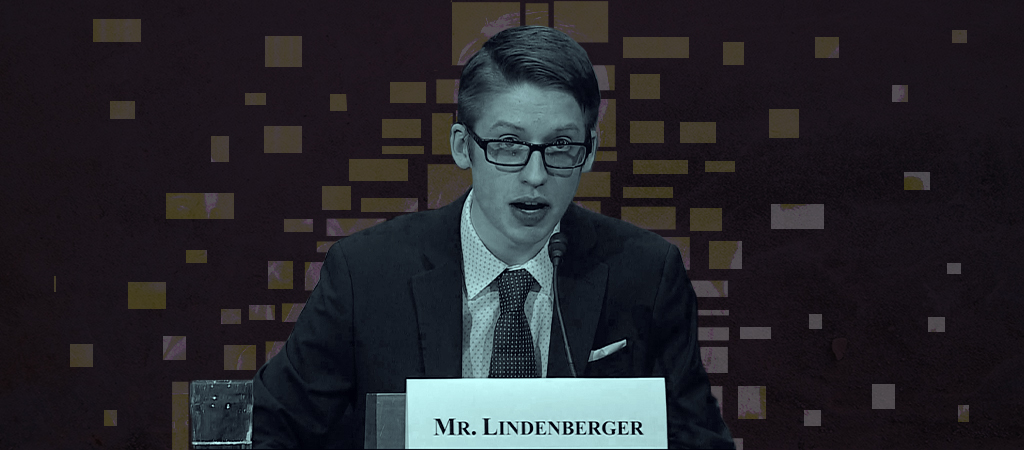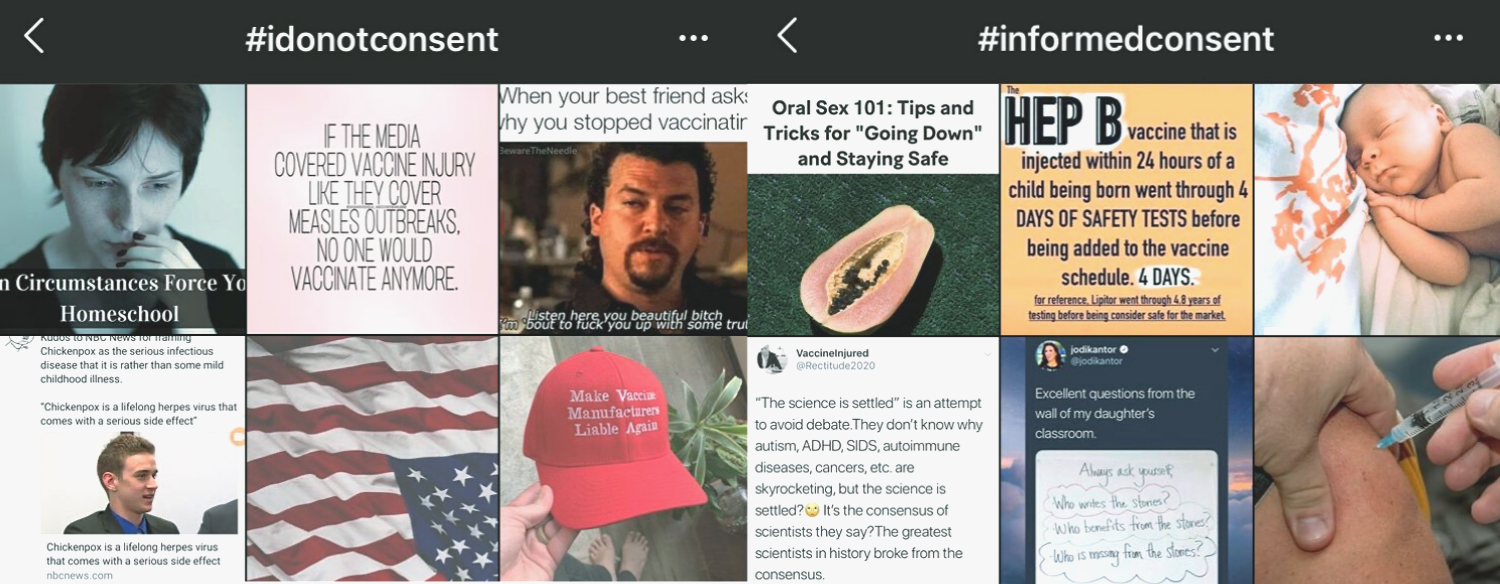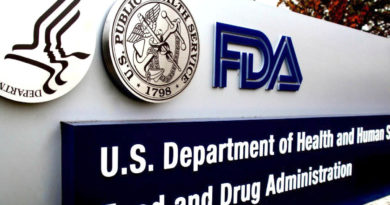How anti-vaxxers get around Instagram’s new hashtag controls
In March 2019, a teenager from Ohio, Ethan Lindenberger, sat before a Senate Committee in Washington. Wearing glasses, a suit and tie, his hair carefully combed to the side, he described how his mother refused to vaccinate him. Her beliefs, which he began challenging aged 13, were reinforced by conspiracy theories she found online. “My mother would turn to anti-vaccine groups and social media looking for evidence in her defense,” he told the committee.
The Senate hearing had been called to examine the reasons behind the recent resurgence of preventable diseases. Across the United States, American physicians are battling the worst measles outbreaks in decades. And globally, polio – which had almost been on the brink of extinction – is making a deadly comeback.
Responding to mounting pressure in the wake of Lindenberger’s speech, Facebook pledged to stop recommending vaccine disinformation on its platforms and make it harder to find anti-vax content in searches. But eight months on, evidence gathered by Coda shows that anti-vaxxer movement is flocking to Facebook-owned Instagram, gaming the app’s algorithm to spread anti-vaccine disinformation.

Illustration by Anastasia Gviniashvili
Until the spring of this year, anti-vaxxers enjoyed near total freedom on Instagram. “They had a white flag where they could do anything they wanted,” said Anne-Julie Dionne, 22, a Quebec-based pro-vaccine campaigner who runs an account called @queenofvaccines.
In May, Instagram shut down some of the most popular anti-vax hashtags, including #vaccinescauseAIDS, #vaccineskill and #vaccinescauseautism. But anti-vaccine Instagram users have been getting around the controls by employing more than 40 cryptic hashtags such as #learntherisk and #justasking.
“It doesn’t sound as straightforward and can be misleading for families who are looking up that information,” said Alice, 29, a California pediatrician who runs the pro-vaccine account @vaccinesinvogue and wished to remain anonymous for fear of online abuse.
Tactics like spelling vaccines with a cedilla (vaççines) or using a bracket (va((ines) to try to avoid detection by Instagram also proliferate on the platform. “The same amount of misinformation is floating around, if not more,” Alice said. “It kind of forms this almost exclusive group of people who are using the same hashtag to distribute their information.”
Another popular tactic has been simply to take over hashtags that were initially used by other Instagrammers campaigning for abortion rights and sexual consent, such as pro-choice hashtags #righttochoose, #mybodymychoice and #bodilyautonomy. Many of these hashtags are now saturated with anti-vaccine propaganda.
A consent hashtag, #idonotconsent, has been particularly heavily co-opted — around three quarters of last month’s posts had an anti-vaccine agenda.

Holly, a Canadian anti-vaxxer in New York with the handle @novaccinesnoworries, simply latched on to hashtags used by vaccine advocacy groups. “What accounts like mine have done is actually started using the pro-vax hashtags. I use #vaxwithme and #provax just to try and get the information out there, since our hashtags are being so heavily censored,” the 24-year-old told Coda on condition of anonymity.
Anti-vax users have increasingly turned to Instagram as they felt the effects of Facebook’s effort to deprioritize anti-vaccine content and stop recommending it to its users. “I find it a lot harder to share information on Facebook. Posts on Facebook get taken down a lot faster and it seems to be more monitored,” said Holly. “But with Instagram, while it’s still censored, it’s not as heavily done. Posts don’t really get removed that easily – even if someone reports them it’s really rare.”
A scroll within any of the hashtags currently used by anti-vaxxers quickly brings up widely-debunked pseudoscience, such as the non-existent link between vaccines and autism, or the false claim that the flu shot causes fetal death. “Hundreds of babies were murdered in the name of vaccines,” falsely claims a particularly prevalent post from last month.
“Don’t tell me you [sic] vaccinated kids turned out “fine” if they have asthma, autism, epilepsy, depression, diabetes, cancer, food allergies, ADHD, anxiety, eczema,” another popular and much-reposted disinformation meme claimed on the #idonotconsent hashtag in November.
Together, the hashtags contain more than 240,000 posts. Instagram would not comment on what benchmark was needed to shut down a particular anti-vax hashtag, citing that doing so would weaken their anti-misinformation defenses.
Instagram clarified that anti-vaxxers themselves did not violate the company’s guidelines. “Anti-vaccine content isn’t against our policies and we won’t take action on a hashtag because it contains this type of content,” said Stephanie Otway, a Facebook company spokesperson in an email. “If a hashtag contains a certain amount of vaccine misinformation, we may restrict it or block it altogether.”
After Coda shared a list of hashtags with Instagram that contained significant volumes of anti-vax content, the #vaççineskill, #noflushot, #learntherisk, #researchdontregret and #stoppoisoningyourkids hashtags were taken down. Dozens of anti-vax hashtags remain, and more are created and followed every week.

For Instagram, “the challenge is, they’re trying to find a balance between bad information and freedom of expression,” said Renee di Resta, a disinformation expert and co-founder of advocacy group Vaccinate California.
Another issue Instagram is dealing is what di Resta terms “the asymmetry of passion.” “There’s a real asymmetry of passion on who involves themselves in the issue. The overwhelming majority of people who vaccinate have a perfectly positive experience,” she said, explaining that this meant they were unlikely to begin campaigning about vaccines. “It’s the equivalent of saying, I’m going to tweet about how the earth is round.”
Pro-vaccine accounts like Dionne and Alice’s tend to have a much harder time gaining followers – Alice gets around this by using anti-vax hashtags to post her vaccine advocacy content. Her posts, distinctively colored “millennial pink” stand out amid the sea of anti-vaccine memes. “My goal is not to get lots of followers, my goal is just to put that information out there.”
Otavio Freire, President and co-founder at U.S.-based cybersecurity company Safeguard Cyber, said anti-vaccine content is a favored pressure point in disinformation campaigns run by foreign bots and trolls. “There are some topics that are perfect to create that divisiveness and anger. That’s what these memes are trying to do,” he said.
“The overwhelming majority of these accounts make Instagram behave in a certain way,” he added. “The algorithm’s being spoofed.”
Freire calls this practice as “memetic warfare,” a term used to describe modern information warfare waged through the confines of a meme. “It’s digestible, it’s easy to look at,” he said. “It’s great for amplification of disinformation, and lo and behold – what platform is great for images – Instagram.”
Another Instagram feature that proves useful to anti-vaxxers is the fact that the app does not allow users to post links except in their bios, making it easy to post unfounded information without citations and accountability.
“What I like about Facebook is you can actually post articles and links,” said Dionne, the pro-vax campaigner. “Instagram keeps people from opening an article and reading it. I’ll post my links anyway,” she said, but added that it was a source of frustration – anti-vaxxers would frequently ask her for “proof” that vaccines were safe.
In September, Facebook and Instagram introduced a further measure to limit disinformation and increase awareness around vaccines: when a user searches for vaccines, they are greeted with a pop-up asking if they would like to visit the Center for Disease Control or the World Health Organization instead. In a statement, WHO Director-General Dr Tedros Adhamnom Ghebreyesus welcomed the feature. “Major digital organizations have a responsibility to their users – to ensure that they can access facts about vaccines,” he said.
Those studying the day-to-day vaccine movement were less optimistic. “Now Instagram is picking the winners and losers in society — I don’t know if that’s a better freedom of speech approach to the actual problem,” said Freire, who believes the app’s algorithms allowing falsely-amplified content to reign supreme should be addressed as a priority.
Instead of visiting the WHO websites, users can opt to “see posts anyway,” upon which they’re greeted with a rash of the most popular anti-vaccine accounts. “It’s like ‘we can’t deal with the underlying symptom, so let’s try to mediate it by giving you a pop-up’ – it’s ultimately not attacking the cause but a symptom of disinformation.”
Anastasia Gviniashvili contributed research.
Correction: In the original version of this article, Otavio Freire’s name was misspelled, and his title was misidentified.
*** This article has been archived for your research. The original version from Coda Story can be found here ***



